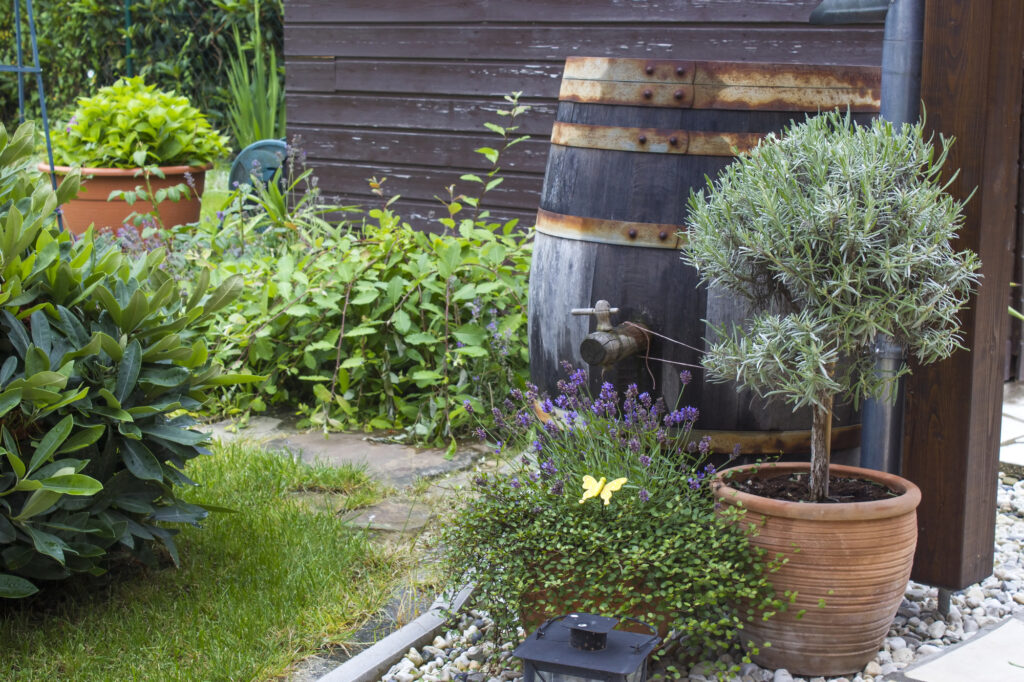Invasive species can be seen as environmental interlopers—unwelcome guests that upset the balance of carefully evolved ecosystems. Their introduction and proliferation often go unnoticed until significant damage has occurred, making early recognition and intervention critical. According to a report by the Global Invasive Species Programme (GISP), these species cause severe ecological consequences, altering habitats and leading to the decline of native biodiversity, which comprises the fundamental building blocks of our ecosystems.
Invasive species disrupt natural habitats and the economies of areas reliant on rich, diverse natural resources. The Food and Agriculture Organization (FAO) estimates that the cost of damage caused by invasive species runs into billions yearly, affecting agriculture, forestry, fisheries, and tourism. Effective strategies to protect our environments, like those outlined in 5 ways to prevent invasive species, are essential.
The Impact of Invasive Species on Native Landscapes
The impact of invasive species on native landscapes is profound, altering ecological dynamics and reducing biodiversity. Invasive species often monopolize resources such as nutrients, water, and sunlight, crowding out native species that cannot compete as effectively. According to the U.S. Geological Survey, invasive species can lead to habitat loss, changes in nutrient cycling, and increased vulnerability to other environmental stresses.
A classic example is the introduction of the Zebra Mussel in North American freshwater systems. This invasive mollusk outcompetes native species, alters food webs, and damages infrastructure. As a result, ecosystems suffer significant functional and structural changes. Moreover, invasives can serve as vectors for new diseases, adding another layer of threat to already imperiled native species.
The consequences extend beyond ecological impact to economic ramifications, as resources are diverted to manage infestations and restore damaged areas. These financial burdens necessitate integrative management approaches that combine scientific research, community involvement, and policy reforms to mitigate the problem effectively.
Recognizing Common Invasive Plants
Invasive plant species often masquerade as innocent garden additions until they overrun native plants. These invaders are characterized by their aggressive growth patterns and adaptability. According to the U.S. Department of the Interior, plants like the Spotted Knapweed and Purple Loosestrife have wreaked havoc in numerous ecosystems by altering soil chemistry and hydrology and displacing native plants.
Educational initiatives established by environmental groups and government agencies play a vital role in teaching individuals how to recognize these invaders. They emphasize the importance of distinguishing invasive plants from native and beneficial species and provide resources such as the Invasive Species 101 guide for recognizing and controlling them.
Early identification and management can prevent invasive species from gaining a foothold. The coordinated efforts between local botanists and community watch groups provide continual monitoring and rapid response capabilities. Educating a wide audience, from hobbyist gardeners to professional landscapers, is a central component of these ongoing preventative strategies.
Importance of Biodiversity in Landscaping
Biodiversity ensures resilience against environmental changes and disturbances, which is crucial in landscaping. Each species—plant, animal, or microorganism—contributes uniquely to ecosystem functionality, including nutrient cycling, air and water purification, and pest control, suggests the Center for Biodiversity and Conservation. Such diversity creates deeply interwoven networks of life that stabilize the environment.
Landscaping that emphasizes biodiversity through the use of native plants results in dynamic, visually striking, and ecologically efficient gardens. These habitats foster complex ecological interactions and healthy soil ecosystems, reducing the need for chemical fertilizers and pesticides, which can disrupt these beneficial relationships.
Appropriately chosen native plants can provide ecological and aesthetic benefits, maintaining garden beauty year-round while protecting local ecological integrity. As ecosystems within landscaped areas thrive, they promote an enriched quality of life for surrounding human populations who enjoy the recreational, cultural, and health benefits associated with biodiverse green spaces.
Proactive Steps to Prevent Invasion
Preventing the incursion of invasive species involves more than immediate intervention; it requires foresight and planning. The National Resources Conservation Service (NRCS) encourages adopting buffer zones with native plants surrounding waterways and sensitive ecosystem margins to deter invasives that exploit weakening boundaries.
Creating policies that enforce thorough inspection and regulation of shipped plant materials helps stem the tide of unwanted species. Community outreach programs can spotlight the importance of cleaning and maintaining garden tools, footwear, and outdoor gear that might inadvertently harbor invasive seeds or spores, promoting a shared responsibility among citizens.
Using technology, such as drones and satellite imaging, to track and map out infestations allows for targeted and efficient responses. Land managers can develop precise, data-driven plans to protect ecologically sensitive areas against future invasions by integrating these technologies into land stewardship practices.
Monitoring and Maintenance Practices
Ongoing monitoring paired with adaptive maintenance practices is crucial for sustaining the battle against invasive species. According to the International Association for the Conservation of Natural Resources (IACNR), regular site evaluations catalog changes and provide insights into emerging invasions and ecosystem health, enabling swift adaptation of management strategies.
Land managers can employ biological control methods, such as introducing natural predators, to regulate invasive populations without chemical treatments. These control measures must be carefully monitored to avoid unintended ecological impacts. For example, introducing a predator with no natural population controls can offset the desired balance.
Environmental groups offer regular workshops and educational seminars that provide landowners and landscape professionals with the tools and knowledge necessary to maintain native landscapes. These initiatives emphasize collaborative learning and engagement, motivating individuals to participate actively in their local ecological communities.
Restoring Native Landscapes After Invasive Species Removal
After invasive species are removed, restoring the native landscape becomes the next essential step toward ecological recovery. Restoration aims to reestablish the original habitats and encourage the return of native flora and fauna. According to the Society for Ecological Restoration (SER), effective restoration practices consider historical conditions, local ecology, and the resilience of native species.
Restoration efforts often involve replanting native species, modifying site conditions to favor native growth, and ongoing management to prevent reinvasion. For example, the removal of invasive plants should be followed by soil amendments to promote the growth of native species. Engaging local communities in restoration projects can build a sense of stewardship and ensure ongoing maintenance.
These efforts are vital not only for ecological recovery but also for strengthening ecosystem resilience to future challenges, including climate change. Research published in the journal Restoration Ecology highlights that restoring native ecosystems not only supports biodiversity but also enhances ecosystem services such as carbon sequestration and water regulation.
Sustainable Solutions for Landscape Care
Sustainable landscape care is pivotal in formulating a long-term strategy to hinder invasive species. Green infrastructure, which provides ecosystem services like stormwater management and habitat provision, is integral to sustainable practices.
Integrating concepts such as xeriscaping and permaculture offers water-efficient gardening alternatives that thrive in harmony with local climates, as the Earth Day Network advocates. Raising beds improves drainage and soil aeration, contributing to more effective plant growth and reducing weeds.
Building community gardens and urban green spaces prioritizing ecological health can serve as communal hubs for education and engagement. The incorporation of eco-friendly designs, such as living walls and wildlife corridors, encourages the presence of beneficial wildlife, contributing to vibrant, enduring ecosystems and a shrinking ecological footprint.
Educating the Community
Community-based educational programs are crucial for cultivating informed action and widespread participation in invasive species management. Gardens and nature centers expanding environmental literacy can bridge the gap between communities and professional ecologists by promoting coordinated conservation efforts.
The advantages of incorporating experiential learning into educational programs are vast. Engaging local schools, universities, and community groups in citizen science projects that monitor and report invasive sightings provides real-world research data and fosters an enriched appreciation of nature among participants.
Furthermore, digital technology plays a pivotal role in providing platforms for information exchange. Social media and mobile applications can swiftly disseminate knowledge, while online workshops and webinars make vital educational resources accessible to diverse audiences. Community initiatives can amplify their impact by adopting innovative messages and creative delivery channels, engendering a collective responsibility toward curbing invasive threats.
Conclusion: Fostering a Healthy Environment
The endeavor to shield native landscapes from invasive species requires an integrated approach, embracing educational outreach, rigorous preventive measures, and sustainable management practices. By adopting a multifaceted perspective, individuals and communities can work toward sustaining biodiversity and promoting ecological balance.
While the challenge is complex, combining technology, community-driven initiatives, and policy reforms can yield effective results. By valuing our natural surroundings and understanding the interconnectedness of built and natural environments, we lay the foundation for a healthier world, ensuring the continuity and integrity of ecosystems we depend on and cherish.
As caretakers of our planet, we foster a legacy of resilience, responsibility, and respect for the remarkable diversity of life in our landscapes. Through our concerted action and commitment, we can create and maintain vibrant ecosystems that enrich our lives and those of future generations.






I had a bush that the bugs destroyed. This is useful information to help me with the bugs.
Spring is here and this is very timely now that our bushes and flower garden are alive again. We do have a gardener that takes care of those for us tbh, I don’t have a green thumb. Great info, btw! 😉
Such helpful tips to ward off pests that bother plants, I have a hydrangea bush in front of my house that keeps getting eaten by squirrels and bugs. I will be sure to use these tips for my landscaping!